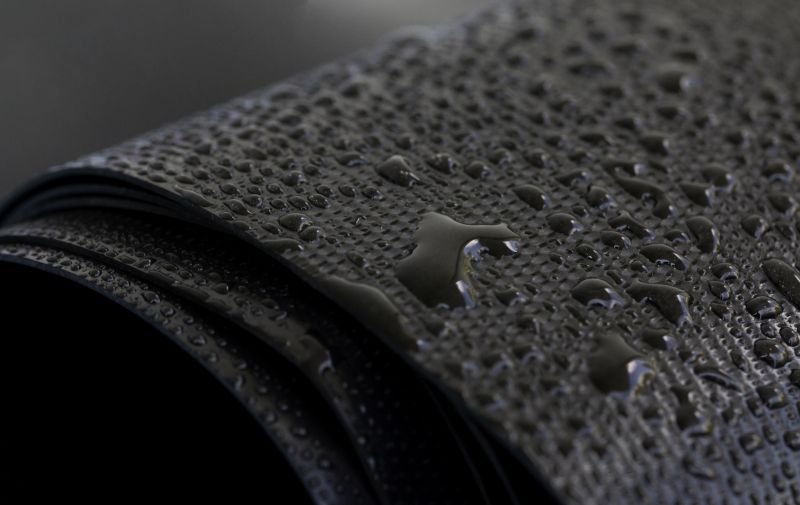Top Waterproofing Products for Long-Lasting Protection
Explore the leading waterproofing solutions designed to safeguard your property from water damage effectively and efficiently.
 Waterproofing products are essential for protecting structures, foundations, and surfaces from water intrusion and damage. They are used in a variety of applications, including basements, roofs, decks, and concrete surfaces, to create a barrier that prevents water penetration. Selecting the right waterproofing solution depends on factors such as the type of surface, exposure level, and environmental conditions. Proper application and maintenance of these products can significantly extend the lifespan of buildings and outdoor structures.
Waterproofing products are essential for protecting structures, foundations, and surfaces from water intrusion and damage. They are used in a variety of applications, including basements, roofs, decks, and concrete surfaces, to create a barrier that prevents water penetration. Selecting the right waterproofing solution depends on factors such as the type of surface, exposure level, and environmental conditions. Proper application and maintenance of these products can significantly extend the lifespan of buildings and outdoor structures.
Top Overall Option
Multi-Purpose Liquid Waterproofing Membrane
A versatile liquid membrane designed for various surfaces, offering seamless, flexible, and durable water resistance. Its ease of application makes it suitable for both DIY projects and professional use, providing a reliable barrier against water intrusion across different environments.
Types of Products For Waterproofings
Liquid Waterproofing Membranes
Flexible, seamless coatings that conform to surfaces, ideal for roofs, decks, and foundations.
Sheet Membranes
Pre-formed sheets made from rubber, bitumen, or plastic, used for foundational and roofing waterproofing.
Bituminous Coatings
Asphalt-based coatings suitable for below-grade applications and damp environments.
Polyurethane Coatings
Highly elastic coatings that provide strong water resistance for roofs and decks.
Acrylic Coatings
Water-based coatings offering UV resistance and flexibility for exterior surfaces.
Crack Sealants
Flexible sealants designed to fill and seal cracks in concrete and masonry surfaces.
Cementitious Waterproofing
Waterproof coatings made from cement, used for basement walls and tunnels.
Penetrating Sealers
Deeply infiltrate porous surfaces to prevent water absorption without changing appearance.
Bitumen Sheets
Durable sheets made from bitumen, suitable for roofing and underground applications.
Rubberized Coatings
Flexible coatings ideal for sealing and waterproofing irregular surfaces.
Hydrophobic Paints
Paints with water-repelling properties, suitable for walls and exterior surfaces.
Waterproofing Tapes
Self-adhesive tapes used to seal joints, cracks, and seams in various surfaces.
Spray-On Waterproofing
Aerosol or pump spray products that provide quick, uniform waterproof coatings.
Epoxy Waterproof Coatings
Hard, durable coatings suitable for industrial and heavy-duty applications.
Vapor Barriers
Materials installed to prevent moisture vapor from passing through surfaces.
Waterproofing Paints
Specialized paints that add a water-resistant layer to various surfaces.
Popular Choices
Widely used for their ease of application and seamless coverage, suitable for multiple surfaces.
Common for below-grade and roofing applications, valued for durability.
Popular for their elasticity and strong water resistance on various outdoor surfaces.
Frequently used to maintain the integrity of concrete and masonry structures.
Preferred for basement walls and tunnels due to its compatibility with concrete surfaces.
Chosen for their ability to protect porous surfaces without altering appearance.
Favored for sealing irregular surfaces and providing flexible waterproof barriers.
Convenient for quick sealing of seams and cracks, especially in DIY projects.
Popular for its fast application and uniform coverage, especially on large surfaces.
Often selected for industrial applications requiring high durability.
Increasingly used for exterior walls to add an extra layer of water resistance.
Commonly installed in basements and crawl spaces to prevent moisture migration.
Chosen for their ease of use and ability to enhance existing surfaces.
Different waterproofing products are formulated for specific needs. Liquid membranes are commonly used for seamless coverage on irregular surfaces, while sheet membranes provide durable, pre-formed barriers suitable for foundations and roofing. Sealants and coatings are popular for filling cracks and sealing joints, ensuring water does not seep through vulnerable areas. For concrete surfaces, penetrating sealers can offer deep moisture resistance without altering the surface appearance.
Understanding the unique properties of each product type helps in making informed decisions. For example, some products are designed to withstand extreme weather conditions, while others offer flexibility to accommodate structural movement. Proper surface preparation, application techniques, and curing times are critical for optimal performance. Regular inspections and reapplications may be necessary to maintain waterproof integrity over time.
In the Plymouth, WI area, where seasonal weather fluctuations can impact structures, choosing the right waterproofing products is particularly important. Whether for residential or commercial projects, investing in high-quality materials and following manufacturer guidelines can help ensure effective water protection. Consulting with local professionals can also provide insights tailored to the specific climate and building requirements in Wisconsin.
Key Buying Considerations
- Determine the specific surface type and exposure conditions to select an appropriate waterproofing product.
- Assess whether the product is compatible with existing materials and surfaces.
- Consider the flexibility and elasticity needed for the application area to accommodate movement.
- Check the product's resistance to UV rays if it will be exposed to sunlight over time.
- Review application methods—some products may require special tools or techniques.
- Evaluate curing times and whether the product needs multiple coats or layers.
- Look for products with proven adhesion properties to ensure long-lasting performance.
- Consider environmental conditions such as temperature and humidity during application.
- Review manufacturer instructions for surface preparation and application to maximize effectiveness.
- Think about maintenance and reapplication intervals to sustain waterproofing integrity.
- Select products that are suitable for the specific climate conditions in Plymouth, WI.
- Determine if the product is suitable for interior or exterior use, or both.
- Check for any safety precautions or ventilation requirements during application.
- Compare durability ratings for different products based on intended use and lifespan expectations.
- Ensure the product is compliant with local building codes and standards.
